Here is a list of the traditions commonly practiced at a Jewish Wedding. While these customs are representative of strict Jewish Law, couples of all faith levels should be able to find ways to integrate parts of each into even the most modern ceremonies. Though based on religion, these traditions carry many meanings and symbols that surpass just the “Jewish”.
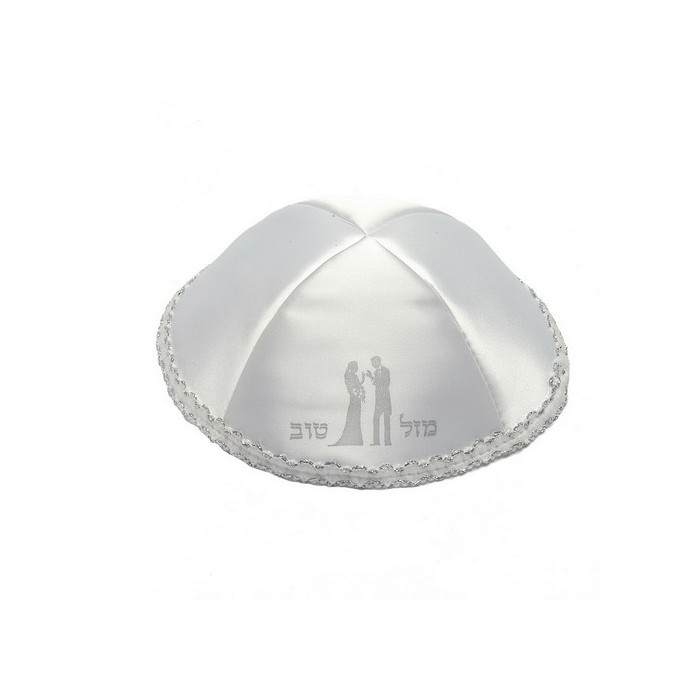
Ketubah
The Ketubah is essentially a contract between the kallah (bride) and chatan (groom) detailing the obligations of one partner to another in the marriage. It is a fairly progressive document given the rights it provides the woman (you go, Jewish Girl!). Before the ceremony the groom must sign the Ketubah in front of two witnesses, who must then sign it as well. Traditionally the signed Ketubah is read out loud during the ceremony to separate the two main parts of the wedding. Beautifully designed Ketubot are now the norm so the couple can frame and display in their home.
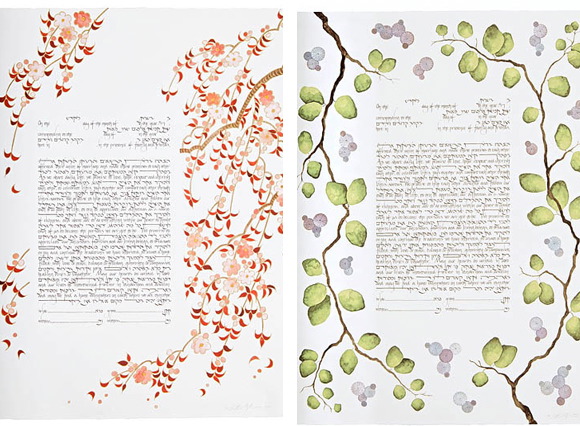
Bedeken
The Bedeken, or “veiling of the bride”, is an Ashkenazi-only wedding tradition. After signing the Ketubah, before the ceremony starts, the groom will veil his soon-to-be bride. There are a few possible reasons for this particular tradition. Some say this act signifies the groom’s commitment to clothe and protect his wife. Others feel it symbolizes modesty as well as the belief that the couple’s love is based on more than physical appearance. Our favorite theory is that this custom began as a result of Jacob’s trick marriage to Leah instead of Rachel as he couldn’t see the face under the veil. Pretty sneaky, sis!
Chuppah
During the ceremony, the couple stands under the Chuppah, or traditional wedding canopy, to represent their future home together. The Chuppah is attached to four posts and is open on all four sides as a symbol that the wedding guests will be welcomed into their house as well.
Hakafot
“Encircling the Groom” is another Ashkenazi tradition. After arriving at the Chuppah, the bride traditionally walks around the groom three or seven times. The reasons for this tradition vary. It could have derived from Jeremiah 31:22, “A woman shall surround a man”. Circling three times may represent the three virtues of marriage: righteousness, justice and loving-kindness whereas the seven circles custom is derived from the Biblical concept that seven denotes wholeness or completeness. A more spiritual meaning is to symbolize the bride leaving her previous family circle to join with her husband to build the (figurative) walls of their new world together. Just as the world was built in seven days, the kallah is figuratively building the walls of the couple’s new world together.
A modern take on the tradition is for both the bride and groom to circle each other. Why should the woman do all the work!?
The Marriage Ceremony
The ceremony is comprised of two parts, the Kiddushin and the Nissuin, separated by the reading of the Ketubah.
Kiddushin (or Erusin)
The Kiddushin is the sanctification of a man and woman to each other. The first of two cups of wine is used during this part of the ceremony. After the Rabbi recites the betrothal blessings, the bride and groom drink the wine.
Following the blessings, the groom presents the bride with a ring. The ring is meant to symbolize a perfect symbol, having no beginning or end and traditionally must be made of pure gold without adornment, pure and simple, as is the couple’s love. The ring is placed on the index finger of the bride’s right hand, believing it is a direct line to her heart. According to strict Jewish law, this is the point at which the couple is fully and legally married. During this time the bride will often present the groom with a ring as well, though it is not a legally recognized party of the ceremony in the Jewish religion.
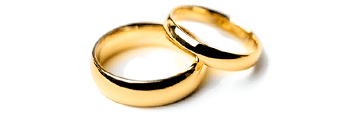
Nissuin (Marriage):
The Shevah Brachot (Seven Blessings) are recited following the reading of the Ketubah, over the second glass of wine. They are as follows:
1. Follow the tradition of beginning joyous occasions with a blessing over wine.
2. Praise God.
3. Alludes to the creation of man and woman, because newlyweds are considered to be reborn.
4. Refers to the creation of humans in the image of God therefore eternally bonding bride and groom together.
5. Affirms faith in God’s eventual restoration of Zion and Jerusalem.
6. Prays that the bride and groom experience the joy Adam and Eve experienced in the Garden of Eden.
7. Contains ten synonyms for joy, ending with a prayer for joy and gladness in the streets of Jerusalem.
The blessings are either recited by the rabbi or hazzan, or by select guests. It is considered an honor to be called up to recite one of the blessings. The couple is given wine to drink after the blessings.
Breaking of the Glass
This marks the end of the ceremony (and the beginning of the REAL celebrating!) A glass (or light bulb for the light steppers) is wrapped in a cloth and placed on the floor. The groom shatters it with his right foot, causing jubilation, applause, and excitement amongst the wedding guests.
There are several theories as the significance of this tradition. Here are some of the well known:
- To represent the destruction of the Temple in Jerusalem
- To mark the change in the couple’s lives from separate to together
- As a reminder that relationships are delicate and must be treated with love
- And (much to our delight), to represent the last time the groom gets to “put his foot down”
Yihud
After the ceremony ends, the couple is immediately sent to a private room to spend time alone together for a few minutes before rejoining the rest of their wedding guests. The word Yichud derives from the Hebrew word for “one”, so this action is meant to represent the transition of the couple from two individuals to one whole.
So what happens in this magical room? Well, that’s up to the bride and groom. Officially they are meant to use it as a period of bonding and reflection. Some may use it as an opportunity to grab a bite to eat after a day of hardly eating. Others may just catch their breaths and give their feet a quick break from dress shoes. Some couples may use the time to exchange private thoughts or personal wedding gifts to one another. And the more daring may take advantage of the privacy to enjoy the more delightful benefits of marriage!
Which traditions did you incorporate at your wedding? Did you enjoy partaking in those traditions? Any you chose not to incorporate? Comment and let us know your choices and why!



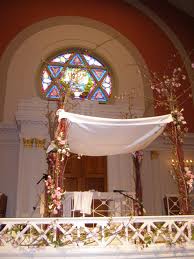
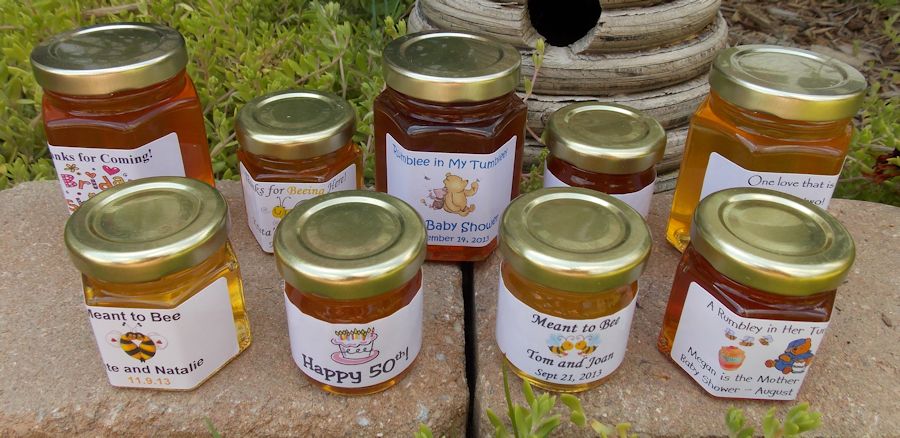
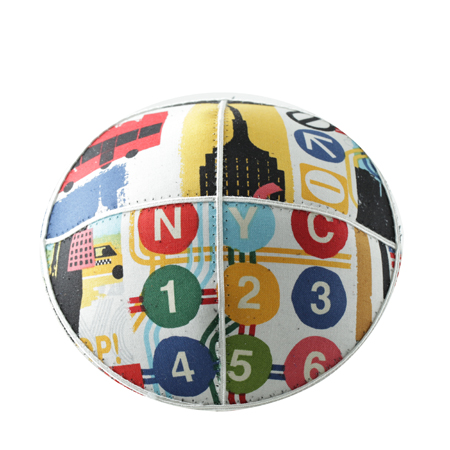


[…] Continued here: Jewish Wedding Traditions – Jew it Up! […]
Fantastic blog site listed here! And your web-site considerably in place rapidly! Exactly what sponsor do you think you’re the application of? Am i allowed to buy your affiliate marketing web page link on your number? I personally drive my website jam-packed as rapid while your own property hahah